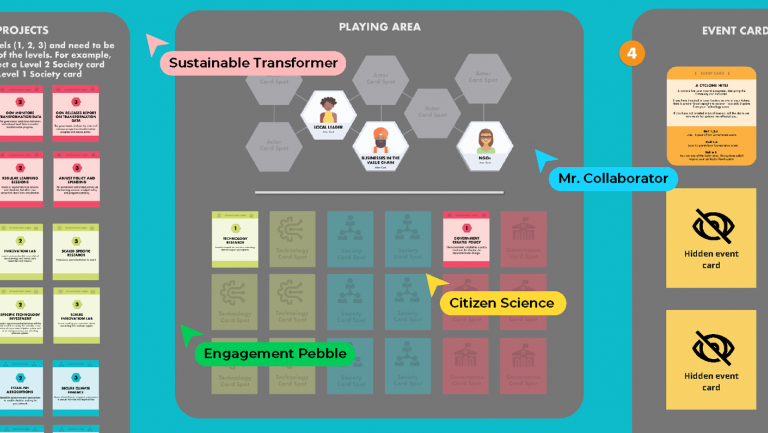Sign up for our monthly newsletter

What Australia's embattled banks can learn from a chocolate bar...
“Bank the way you want.”
“Our focus is on improving customer experience and building trust.”
When you surf the websites of Australia’s largest financial institutions the picture is of an industry obsessed with putting customers first.
Take, for example, the investment specialists who list their top priority for 2018 as: “Continuing the customer-centred transformation of our business.”
That’s AMP.
Yes, the same institution that has seen its market capitalisation plummet amid a Royal Commission that has indirectly claimed its Chief Executive, Chair and a host of other scalps. Among the accusations levelled against it: that customers were charged for services that were never even delivered.
One might wonder: How could it come to this? How did companies who guard their reputation so zealously and invest significant resources in becoming more “customer centric” end up here?
While the negatives are understandably being focused on right now, the truth is the current situation presents tremendous opportunity. Because the recipe for a better, mutually beneficial relationship with customers is out there. For banks and for everybody else.
And it begins with just a little bit of chocolate.
How we got here
For more than three decades, Australia’s banks have been on an efficiency journey when it comes to interacting with customers. They have migrated from from face-to-face contact, to ATMs, phone-banking and then online banking. Human-centered design has been used along the way to help sharpen and inform that journey, focusing always at the level of the transaction.
A clearer form to fill in. A less frustrating call-centre experience. A more user-friendly website. These have been the focus. Success has been measured by “customer satisfaction scores”. And for some banks who are now in troubled waters these scores were consistently high.
There is nothing wrong with any of these goals but on their own they can never be enough. Australia’s financial institutions can take an important step forward if they begin to shift their thinking from the level of the transaction to concentrate on the whole customer and their long-term interests.
Read the APRA report into dealings at the Commonwealth Bank and the schism is laid bare.
“Notwithstanding the customer focus enshrined in CBA’s Vision and Values, and its industry-leading customer satisfaction scores, the customer voice (in particular, customer complaints) did not always ring loudly in decision-making forums and product design,” the report finds.
The customer voice. More on that later.
Read APRA’s report and there’s a clear prescription. It argues for an immediate “injection into CBA’s DNA of the ‘should we’ question in relation to all dealings with and decisions on customers “

A critical question
That question: not just ‘can we?’ but ‘should we?’ is at the heart of truly-meaningful human-centered design.
As customer-focused companies the central question should never be: How can we get our customers to purchase more of our products, regardless of whether they need or value them?
Human-centred design is about creating systems, products and outcomes where everybody benefits – or at least that’s the goal.
In our work around the globe, ThinkPlace deals with some of the world’s largest companies. They are household names and, like Australia’s banks, they guard their reputations fiercely.
Increasingly, I’m seeing in those companies a commitment to pursuing shared value that has not fully taken root yet in Australia. The time for it is now.
Take Mars for example. The global food giant exists in a hugely competitive market. It is guided by five principles (no, they are not headed by ‘work, rest and play’).
Some of these are self-evident: things like quality and efficiency. One of them is “Mutuality”.
Wait, What?
“A mutual benefit is a shared benefit,” the company says. “A shared benefit will endure.”
For Mars this means two important things: Customer interests are paramount, even where they sometimes diminish commercial opportunities. And, just as importantly, a long-term view of those interests is taken.
About its relationship with consumers, Mars states: “Regardless of business pressures, our actions and decisions must reflect the basic truth that, if quality and value are offered, support and success will come in return. Gains that ignore this will be short-lived.”
Short termism can lead to perverse incentives and perverse outcomes. In the short term it may be advantageous to extract value from one group in the system (customers) in order to deliver it to another (shareholders).
But when you act in this way you set up for an eventual fall in which everybody loses. Shareholders included.
Banking is the kind of business that should be a marathon not a sprint. Get things right and you may have a customer across generations. Botch it and they may never come back.
The way forward
There is a way forward here and that’s what is exciting. The organisation that is truly concerned with human-centred design and focused on shared value wonders not just: ‘how can we profit from a customer?’ but ‘what is best for that person?’
How can we profit and flourish in the long term while also prioritising what’s best for our customers and their lives?
It is a winning recipe not just for banks but for any business, organisation or even government agency that depends on its customers for long term success (and that’s virtually everybody).
In order to work it must be driven by brave, forward-thinking boards and then spread and inculcated across every level of the organisation. It needs to be elemental.
When you begin to take this approach your whole organisation benefits.
How do you do it?
The APRA report laments the absence of the customer voice in CBA’s culture and processes. It’s a telling observation.
At ThinkPlace we talk often about the four voices of design. They include the voice of intent (who has the ability to initiate and drive change?) Next comes the voice of expertise (who has the technical know-how that’s required to implement it?)
The third voice – too often neglected – is the voice of experience (who will use or navigate this system?) In this case that’s the voice of the customer. And, as we have seen, you exclude it at your peril.
What’s the fourth voice? It’s the voice of design. When you engage a skilled designer to assist with cultural or organisational transformation their job is to productively synthesise the other three voices. So that everybody is actively involved in the design process, at every stage.
Real, meaningful human-centred design takes into account all of the people involved at all points of a complex system. More than that it asks: how can we create value for all of these people?
That’s what we mean by shared value. And we get there via a process that harnesses the diverse voices of design – at every stage of the process.
As banks and others begin the move towards reassessing their policies, processes and culture there are huge opportunities for adopting this approach. What could be a greater lure for any financial institution than to be valued and respected by customers, staff and shareholders alike?







